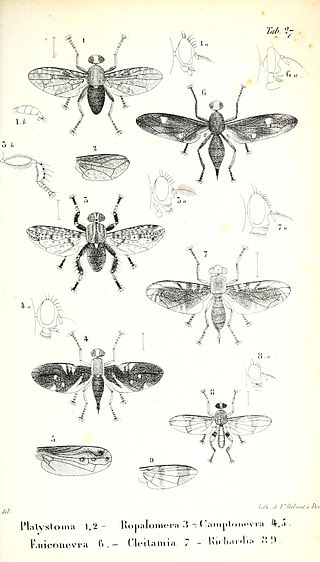
The corn snake, sometimes called red rat snake is a species of North American rat snake in the family Colubridae. The species subdues its small prey by constriction. It is found throughout the southeastern and central United States. Though superficially resembling the venomous copperhead and often killed as a result of this mistaken identity, the corn snake lacks functional venom and is harmless. The corn snake is beneficial to humans because it helps to control populations of wild rodent pests that damage crops and spread disease.

The California kingsnake is a nonvenomous colubrid snake endemic to the western United States and northern Mexico, and is found in a variety of habitats. Due to ease of care and a wide range of color variations, the California kingsnake is one of the most popular snakes in captivity.

Leptarctia is a monotypic tiger moth genus in the family Erebidae described by Stretch in 1872. Its only species, Leptarctia californiae, was described by Francis Walker in 1855. It is found in western North America, from New Mexico and Colorado to California and north to British Columbia. The habitat consists of open forests, meadows and clearings in the mountains.

The Ropalomeridae are a family of acalyptrate flies.
Glyphipterix californiae is a species of sedge moth in the genus Glyphipterix. It was described by Walsingham in 1881. It is found in California.

iNaturalist is an American 501(c)(3) nonprofit social network of naturalists, citizen scientists, and biologists built on the concept of mapping and sharing observations of biodiversity across the globe. iNaturalist may be accessed via its website or from its mobile applications. iNaturalist includes an automated species identification tool, and users further assist each other in identifying organisms from photographs and even sound recordings. As of 9 July 2024, iNaturalist users had contributed approximately 197,660,888 observations of plants, animals, fungi, and other organisms worldwide, and 290,007 users were active in the previous 30 days.
Isla San Lorenzo Sur, is an island in the Gulf of California east of the Baja California Peninsula. The island is uninhabited and is part of the Mexicali Municipality. Isla San Lorenzo Norte is located immediately northwest of Isla San Lorenzo Sur.
Stenopogon breviusculoides is a species of robber flies, insects in the family Asilidae.

Stenopogon is a genus of robber flies, insects in the family Asilidae. There are at least 200 described species in Stenopogon.
Stenopogon breviusculus is a species of robber fly.
Stenopogon engelhardti is a species of robber flies, insects in the family Asilidae.
Stenopogon lomae is a species of robber flies, insects in the family Asilidae.
Stenopogon cazieri is a species of robber flies, insects in the family Asilidae.
Stenopogon inquinatus is a species of robber flies, insects in the family Asilidae.
Stenopogon obispae is a species of robber flies, insects in the family Asilidae.
Psilochorus californiae is a species of cellar spider in the family Pholcidae. It is found in the United States and Mexico.
Animal Ethics is a nonprofit organization formed to promote discussion and debate around issues in animal ethics and to provide information and resources for animal advocates. They also do outreach work in several countries on the issue of speciesism. Their aim is to create a world where moral consideration is extended to all sentient beings. The organization's website covers topics such as speciesism, sentience, veganism and wild animal suffering and has content translated into several languages.
Californiae can refer to:






